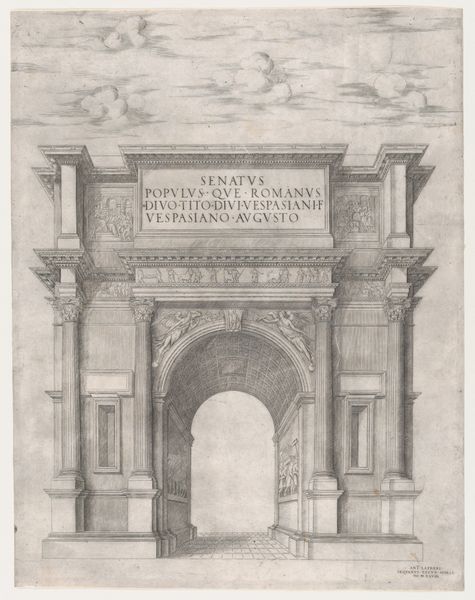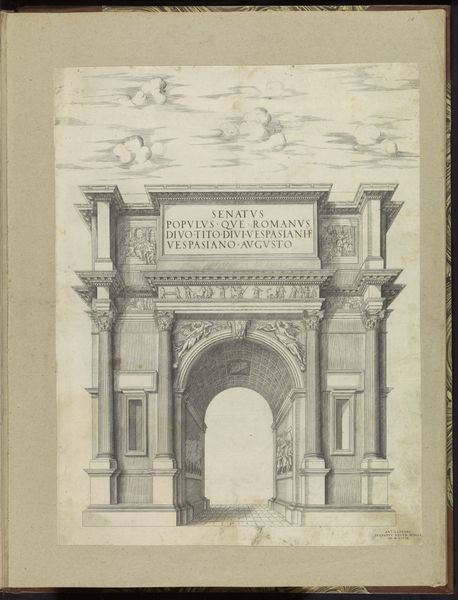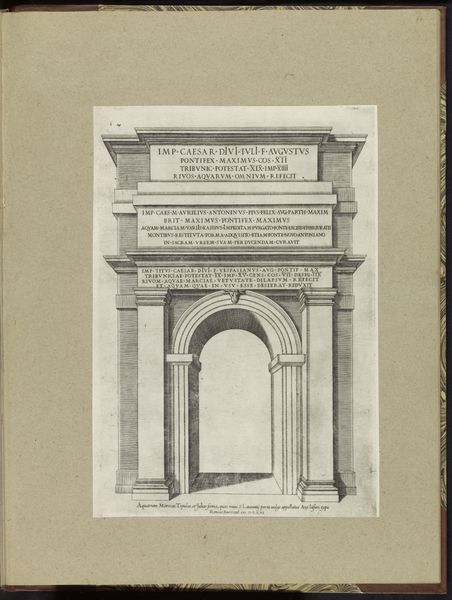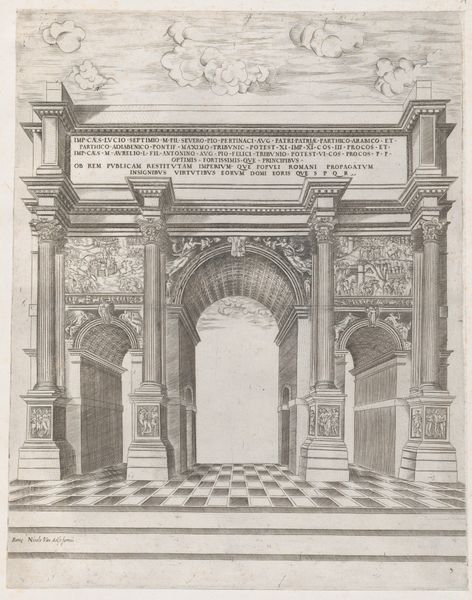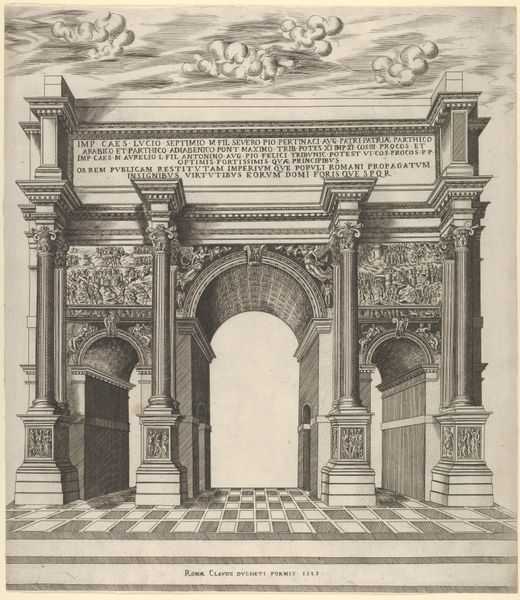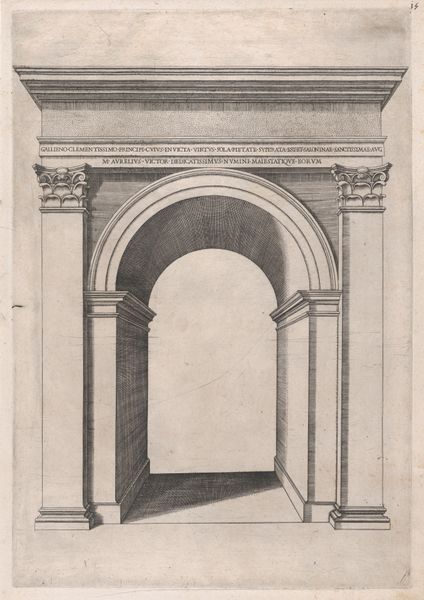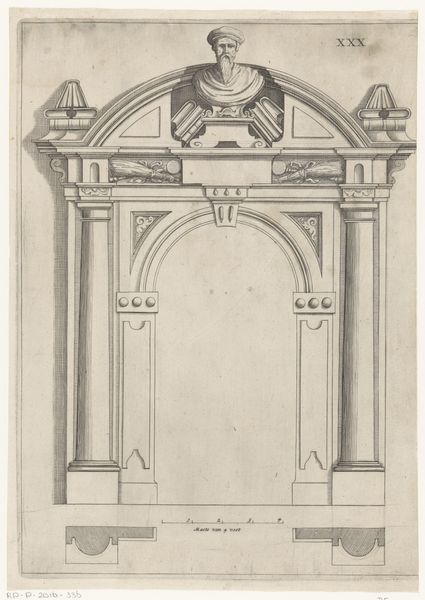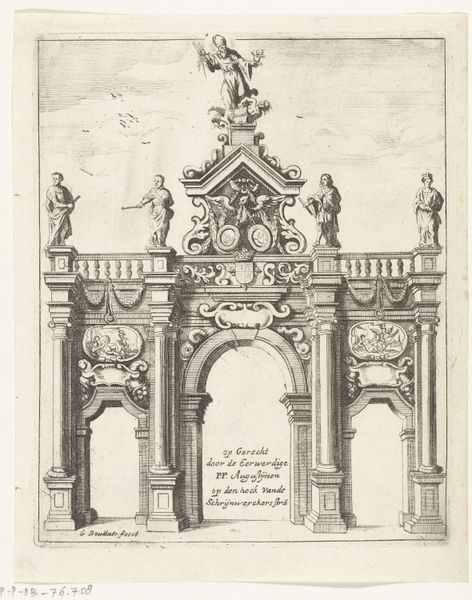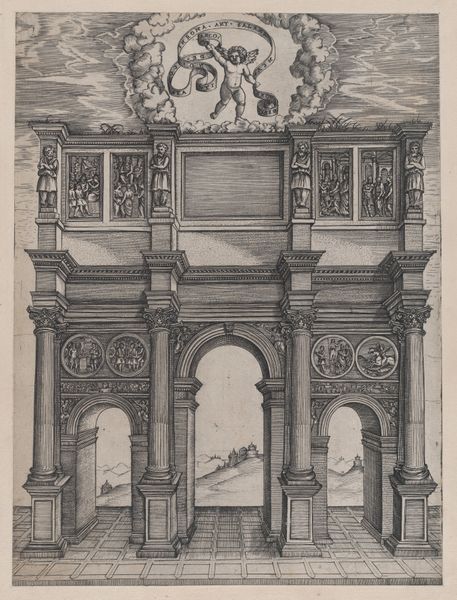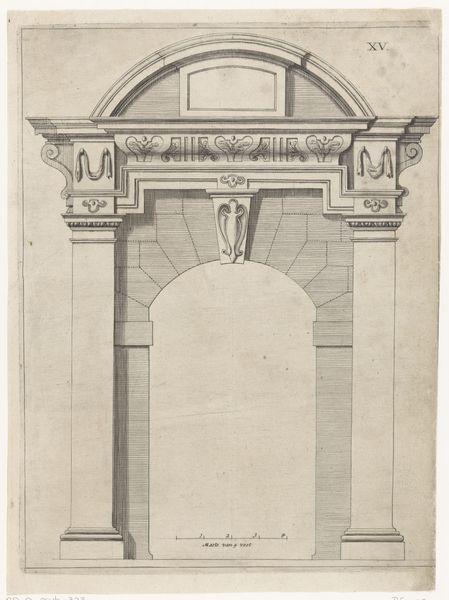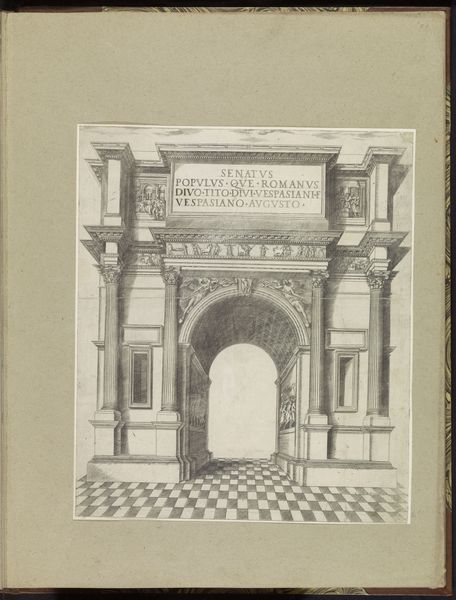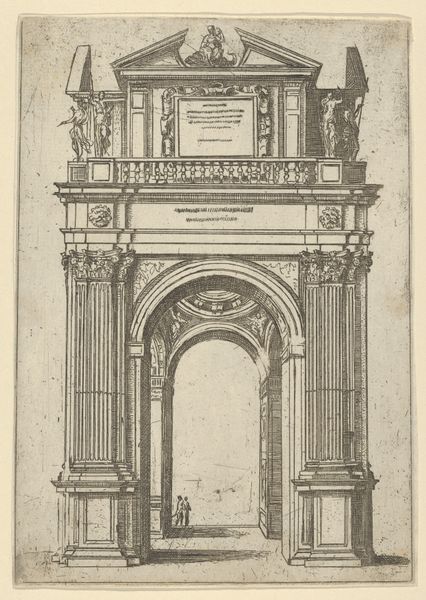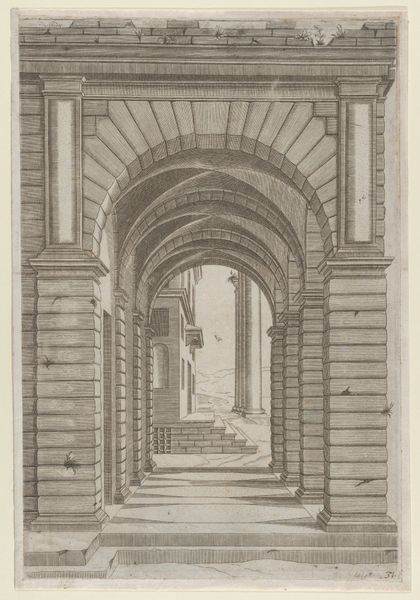
The Arch of Titus Speculum Romanae Magnificentiae) 1535 - 1545
0:00
0:00
drawing, print, etching, architecture
#
drawing
# print
#
etching
#
11_renaissance
#
arch
#
history-painting
#
italian-renaissance
#
architecture
Dimensions: sheet: 17 15/16 x 13 1/4 in. (45.5 x 33.7 cm) mount: 22 1/16 x 16 7/8 in. (56 x 42.8 cm)
Copyright: Public Domain
Curator: This etching, titled "The Arch of Titus (Speculum Romanae Magnificentiae)", dates from between 1535 and 1545, part of a larger project showcasing Roman grandeur. Editor: First glance? It's…severe. Like walking into a black and white movie, all right angles and implied echoes. The chessboard floor practically hums. I feel the need to stand up straighter. Curator: It certainly projects authority. These prints served as vital tools. In an era before photography, they disseminated knowledge of Roman monuments throughout Europe, influencing Renaissance architecture and thought. Consider how access to imagery shaped perceptions of power and historical legacy. Editor: Totally! Like Instagram for Renaissance architects, right? But filtered through, you know, an engraver's soul. The precision is incredible; look at the details in the friezes, almost photographic! But that empty archway is messing with me. It promises a grand vista, but delivers...nothingness. Existential dread in architectural form, perhaps? Curator: I find it offers a moment for contemplation. Remember, the Arch of Titus itself was erected to commemorate a military victory, the suppression of a Jewish revolt. Prints like this, however, often strip away direct historical narrative, focusing instead on the architectural form as an embodiment of Roman imperial power. The artist transforms a monument of conquest into a more generalized symbol. How does that transformation function, ethically? Editor: Hmm, good point. It's easy to get lost in the pretty lines and forget the backstory. That void – maybe it’s a visual echo of all that's been erased or glossed over in the name of Empire. Makes you wonder about the stories architecture doesn’t tell. I feel uneasy about it now; all that sharp detail...hiding a multitude, right? Curator: Exactly! A critical engagement requires us to ask: whose narratives are privileged in the representation, and whose are silenced? Editor: Well, I came in here thinking "cool building," and I’m leaving wondering about empires and erasure. Art changes you, doesn’t it? Thanks for bending my mind today, old pal. Curator: And thank you, for lending your sensitive, and sensible insights. A powerful object indeed, and it offers much to ponder still.
Comments
No comments
Be the first to comment and join the conversation on the ultimate creative platform.
